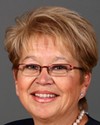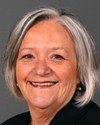Okay, thank you. I appreciate that.
Before I turn it over to my colleague, the next question I have is for Ms. Thomas.
You touched on the fact that there were some Métis women who were going to volunteer or work in schools to maybe address a disconnect. There seems to be an educational component that underscores all of this, that education is the key at the very beginning.
I'd like to read you something quickly and ask for your comment, if it's still applicable.Many [aboriginal] mothers interviewed in the Yukon expressed ambivalence toward education in public schools. In terms of goals, both mothers and educators agree that the future of the child is important but because of lack of contact between the two, the family and the schools, neither knows what the other is doing about it.
Would that be a fair statement?




